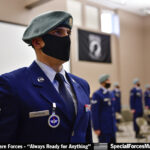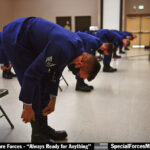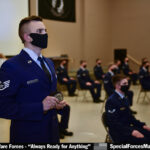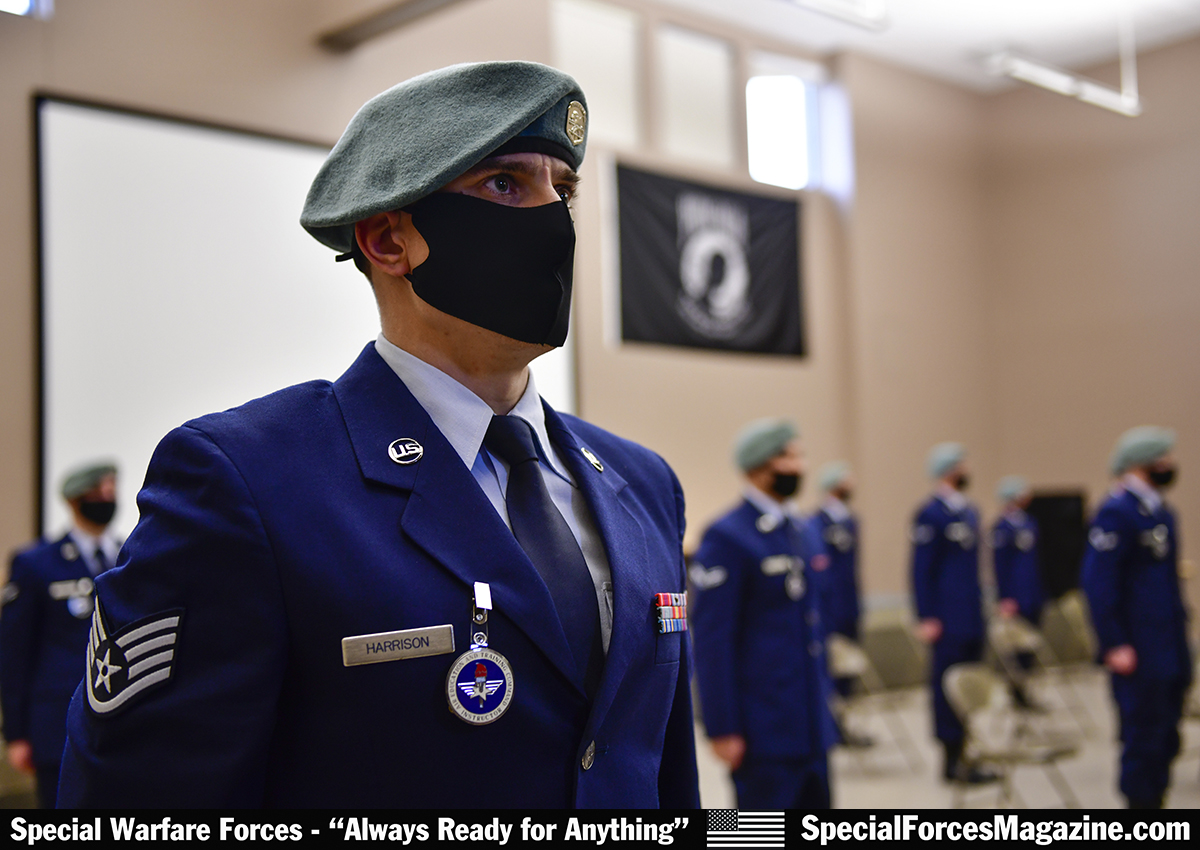FAIRCHILD AIR FORCE BASE, Wash. — The 336th Training Group held a graduation ceremony for its most successful Survival, Evasion, Resistance and Escape Specialist Apprentice Course January 8, with an all-time low attrition rate of just 7 percent.
Prior to becoming SERE specialists, candidates go through a strenuous six-month training pipeline where normal attrition rates average about 50 percent due to the rigorous nature of the training, which takes them from San Antonio, Texas, to here at Fairchild.
“On paper it seems like a short amount of time, but it is a lot of phases that all provide unique sets of physiological and physical challenges,” said Senior Master Sgt. John Conant, SERE apprentice course commandant. “We have to be very consistent from the top down, in order to properly mentor the students and assist them through those challenging times.”
Largely due to the grassroots efforts implemented by SERE cadre to shift the training style and culture throughout the training pipeline, a historical 26 of 28 candidates graduated this SERE Specialist Apprentice Course.
“We have adopted a coaching and mentoring approach, instead of gatekeeping, which worked culturally 20 or 30 years ago,” said Chief Master Sgt. Alexander Guerrero, 336th TRG command chief. “Personalities have changed; generations have changed; how you get across to individuals has changed.”
The 336th TRG is a tenant unit, consisting of three additional squadrons, that partners with Fairchild’s 92nd Air Refueling Wing to ensure the success and mission capabilities of its SERE specialists and students.
“The support from the 92nd ARW is excellent and the partnership is important,” said Col. Dipoma, 336th TRG commander. “While we conduct all the SERE training both on and off base, a large part of maintaining and operating facilities is not something that are in the organic capabilities of a training group. It takes a host wing to do that.”
Despite being limited due to the effects of the COVID-19 pandemic, students and instructors of the SERE Specialist Apprentice Course overcame hurdles, and Team Fairchild adapted to mitigation protocols, successfully producing the Air Force’s next generation of SERE specialists.
“COVID added a degree of difficulty to our pipeline. We certainly are not immune to it. Members of our cadre staff and students alike have been affected by COVID and we have had to react to that,” said Conant. “I think our ability to overcome it started with just being truly vigilant when it comes to the protocols associated with the pandemic.”
The U.S. Air Force is the only branch of the military that has a career field solely dedicated to SERE training. SERE Specialists are responsible for providing everything from arctic and water survival to pre-deployment and search and rescue training throughout the Department of Defense.
“We bring a capability [to the DoD] that is unique,” Guerrero said. “In the big picture we are there to ensure that any individual that is at risk has the capability to survive and return with honor.”
For additional information on how to become a SERE specialist, visit www.gosere.af.mil.
By Airman 1st Class Anneliese Kaiser, 92nd Air Refueling Wing Public Affairs / Published January 08, 2021




Be the first to comment